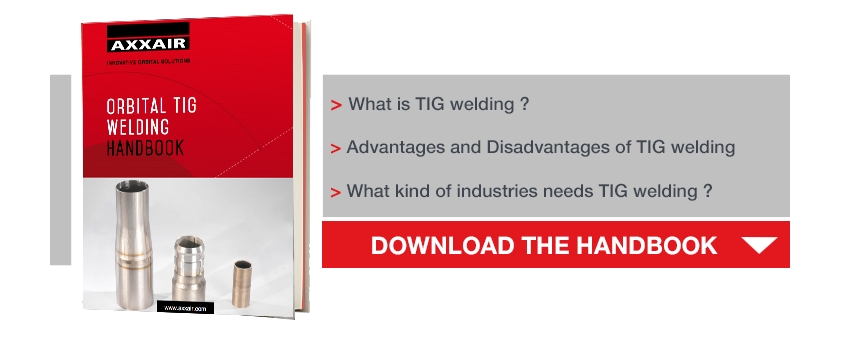For welding workshops that operate under clean room conditions, orbital TIG welding is the only way to guarantee an adequate weld quality in relation to the strict rules imposed by the enforced regulations.
No welding procedure other than TIG or Plasma is permitted. Further it is necessary that the workshop environment complies with the clean rooms’ standards.
But what exactly is orbital welding?
Orbital TIG welding is the safest and most efficient way to join tubes and pipes. The process is always the same: the electrode in the welding head rotates around the fixed tubes that have been tacked before. Orbital welding therefore gets its name from this circular movement of the welding equipment around the workpiece.
This process has numerous advantages and is used in many situations:
- When the tube cannot be moved, or the rotating of the tube would cause problems
- When the access to the pieces that are to be welded is limited
- When the quality and precision of the weld need to be perfect for the later use of the tube in high purity environments`
Clean welding
It is crucial to avoid any possibility of metal contamination during the welding process. Impurities can easily endanger the entire process, resulting in extremely high costs, not only in terms of money but also regarding time. In many cases, orbital welding takes place in clean room conditions where tubes and fittings can be assembled in a clean environment without any risk of contamination.
High efficiency
The power supply for TIG welding is one of the most important components for orbital welding. Other than the fact that it supplies the welding head with electricity and gas, it saves the welding programs called WPS (Welding Procedure Specification). Once the welder has achieved a perfect weld, all parameters are saved in the data memory of the power supply. This way, the same weld can be performed over and over under the same conditions and with the same result.
High Purity
Obviously, there are different areas for high purity applications. The standard customers are the food and beverage industry and the pharmaceutical industry that make use of these procedures to comply with the relevant hygienic specifications. But it gets a lot tougher when you look into the medical field or the industry of aerospace – and it gets even more complicated when you address the manufacturing of semiconductors in clean rooms.
TIG or Plasma?
For the majority of welds, even in clean rooms, TIG (Tungsten Inert Gas) welding also called GTAW (Gas tungsten arc welding) is more than sufficient. But for some applications plasma welding can be of value: the advantages of plasma welding lie in the quality and precision of the nearly invisible welds. This process also allows the welding of very thin parts (0.05 mm for micro-plasma). Just like TIG welding, plasma welding also offers the identical repeatability for weld after weld.
For certain applications, the two procedures can be combined.



